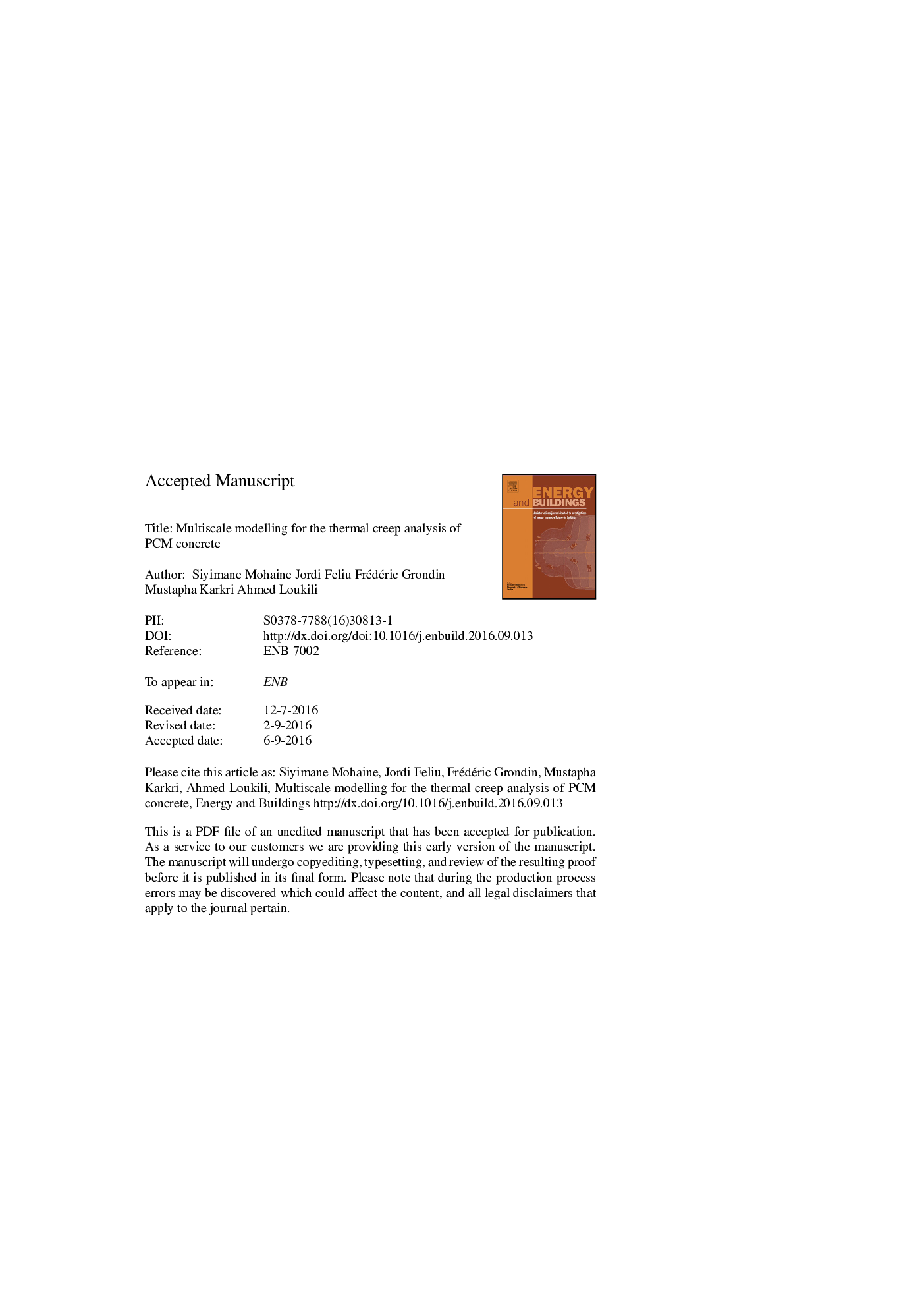| Article ID | Journal | Published Year | Pages | File Type |
|---|---|---|---|---|
| 4914288 | Energy and Buildings | 2016 | 26 Pages |
Abstract
The requested thermal efficiency for new buildings leads to use new materials. In recent years, many researchers have conducted studies on the phase change materials (PCM) concrete composite. Fire safety in buildings has become an important requirement and building materials should have good fire behaviour in order to be used in certain applications. However, there are not many studies on the fire behaviour of PCM concrete. Therefore, the main goal of this study is to develop a numerical multiscale approach to simulate the thermo-mechanical behaviour at high temperatures of concrete containing microencapsulated PCM. An investigation was also conducted on the effect of the thermo-mechanical properties of shell materials used to encapsulate the PCM. PCM have been taken into account explicitly in modelling by considering their size distribution in a representative elementary volume. The effective thermo-mechanical parameters of the cement paste and the concrete have been calculated by a numerical homogenization method. Coupled thermal and mechanical loads have then been applied to the concrete with 10% and 15% of PCM at high temperatures. The use of melamine formaldehyde, with a Young's modulus of 4.5Â GPa, and a particular curve of thermal expansion coefficient instead of polymethyl methacrylate (PMMA) as shell material, showed a better thermo-mechanical behaviour at high temperatures. The thermal deformation and the damage of the resultant PCM concrete were found to be acceptable for building use.
Keywords
Related Topics
Physical Sciences and Engineering
Energy
Renewable Energy, Sustainability and the Environment
Authors
Siyimane Mohaine, Jordi Feliu, Frédéric Grondin, Mustapha Karkri, Ahmed Loukili,
